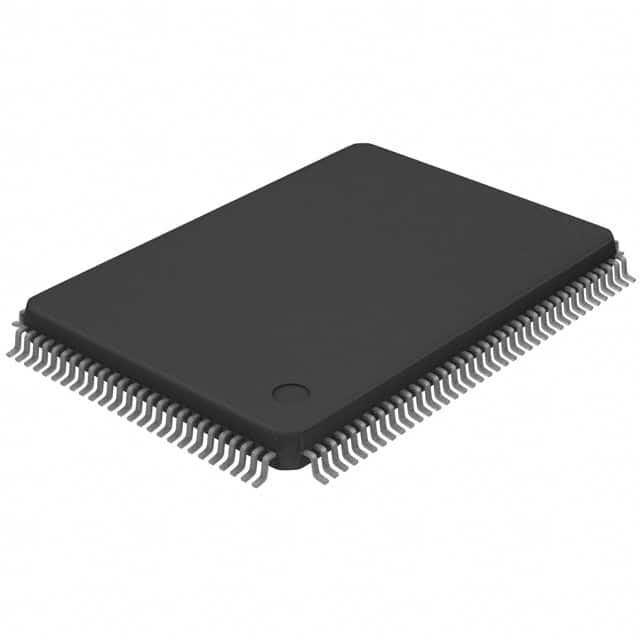DS21552LN+ Product Introduction:
Maxim Integrated Part Number DS21552LN+(Interface - Telecom), developed and manufactured by Maxim Integrated, distributed globally by Jinftry. We distribute various electronic components from world-renowned brands and provide one-stop services, making us a trusted global electronic component distributor.
DS21552LN+ is one of the part numbers distributed by Jinftry, and you can learn about its specifications/configurations, package/case, Datasheet, and other information here. Electronic components are affected by supply and demand, and prices fluctuate frequently. If you have a demand, please do not hesitate to send us an RFQ or email us immediately sales@jinftry.com Please inquire about the real-time unit price, Data Code, Lead time, payment terms, and any other information you would like to know. We will do our best to provide you with a quotation and reply as soon as possible.
Introducing the Maxim Integrated DS21552LN+, a cutting-edge integrated circuit designed to revolutionize the world of electronic devices. Packed with advanced features and unparalleled performance, this product is set to redefine the industry standards.
The DS21552LN+ boasts a wide range of impressive features. With its high-speed data transfer capabilities of up to 10 Gbps, it ensures lightning-fast communication between devices. Its low power consumption ensures energy efficiency, making it an ideal choice for battery-powered devices. The integrated error correction and signal conditioning features guarantee reliable and accurate data transmission, even in challenging environments.
This versatile product finds application in various fields. In the telecommunications industry, it enables seamless data transfer in high-speed networks, ensuring smooth communication between devices. In the automotive sector, it enhances the performance of advanced driver-assistance systems, enabling real-time data processing and analysis. In the consumer electronics market, it enables high-speed data transfer in devices such as smartphones, tablets, and laptops, enhancing user experience.
The DS21552LN+ is a game-changer in the world of integrated circuits. Its exceptional features and wide range of applications make it a must-have for any electronic device manufacturer. Experience the future of data transfer with the Maxim Integrated DS21552LN+.
Interface - Telecom is an integrated circuit specifically designed to achieve signal conversion and protocol adaptation between different devices in communication networks. This type of interface typically integrates multiple communication standards and interface protocols, such as PSTN (Public Switched Telephone Network), ISDN (Integrated Services Digital Network), DSL (Digital User Line), GPON (Gigabit Passive Optical Network), etc., to facilitate seamless data transmission in complex telecommunications environments. The design principle of telecommunications interface chips is based on the understanding and implementation of telecommunications network protocol stacks. Through built-in hardware logic, they achieve functions such as signal encoding, decoding, synchronization, and error detection. Its characteristics include high reliability, low latency, wide compatibility, and adaptability to harsh environments, making it a key component in building modern communication infrastructure.
Application
Interface - Telecom plays a core role in the communication industry and is widely used in fixed and mobile communication networks, including but not limited to telephone switches, base stations, routers, modems, gateways, optical network units (ONUs), cable modem head end systems (CMTS), and other equipment. In these applications, the telecommunications interface is responsible for processing the conversion between analog and digital signals, supporting the transmission of various services such as voice, data, and video. In addition, with the development of the Internet of Things (IoT), 5G technology and edge computing, telecommunications interfaces are increasingly integrated into smart grids, smart cities, telemedicine, autonomous vehicles and industrial automation systems to provide stable, high-speed data connections and promote real-time information sharing and processing.
FAQ about Interface - Telecom
-
1. What is the difference between RJ11 and RJ45?
RJ11 is an interface used for telephone lines, usually with 4 to 6 pins, to transmit voice signals. While RJ45 is an Ethernet interface with 8 pins and is usually used for connections between network devices such as routers, switches and computers.
-
2. How to choose the right telecom interface?
When choosing a telecom interface, you need to consider the bandwidth requirement, transmission distance, signal type (analog or digital), type of connected devices (e.g., telephones, routers, switches) as well as the reliability of the interface and the compatibility of standards (e.g., ITU, IEEE, etc.).
-
3. How do telecom interfaces support modern broadband and 5G communications?
Modern broadband and 5G communications often rely on high-speed interfaces, such as fiber optics and high-frequency wireless connections, to transmit large amounts of data. Telecom interfaces play a critical role in these systems, ensuring efficient communication between devices and supporting large-scale data transfers and low-latency applications such as video conferencing and the Internet of Things.
 Lead free / RoHS Compliant
Lead free / RoHS Compliant





























